What Are Gutter Guards? (Pricing, Benefits, & More)
Being a homeowner comes with the responsibility of completing everyone’s least favorite task – cleaning your gutters.
Rather than hopping on a ladder or hiring a professional to clean your gutters, other options help keep your gutters debris-free.
Rescue My Roof has been working with homeowners for over a decade, helping them keep their gutters clean and efficient. Today, we’ll help you permanently check “clean gutters” off your to-do list.
Gutter guards are devices or systems that prevent debris from entering and clogging your rain gutters. They are installed over or within your existing gutters, creating a physical barrier that allows water to flow through while blocking leaves, twigs, and other debris.
This article discusses how gutter guards work, benefits, pricing, and more. Ultimately, you’ll know if they’re the right fit for your home.
6 Gutter Guard Types
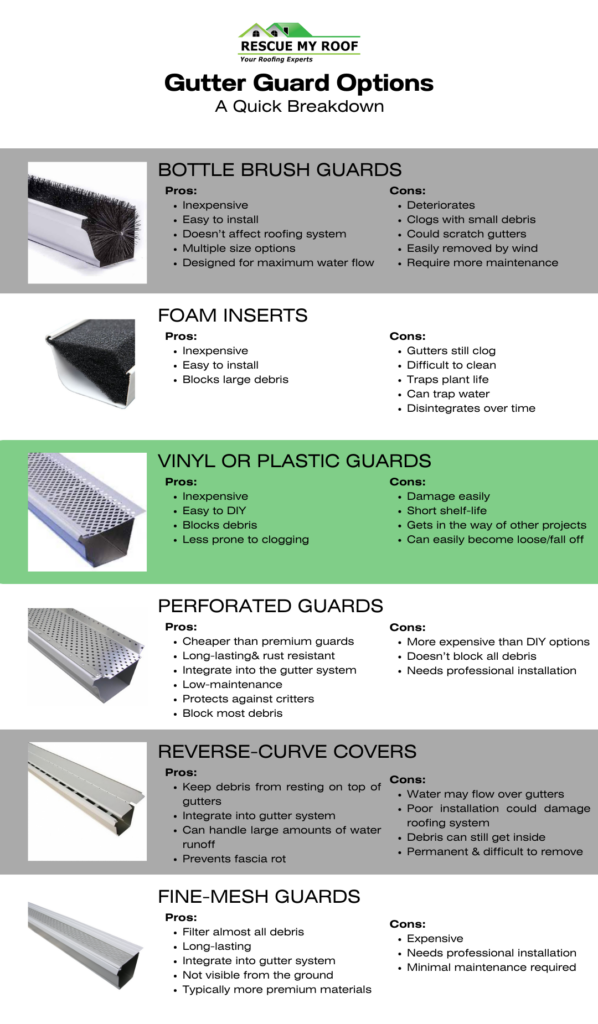
Gutter guards work on a simple principle: they allow water to enter the gutter system while blocking larger debris.
There are several gutter guards, each with its own design and mechanism for achieving this goal. Here are some common types.
1. Bottle Brush Guards
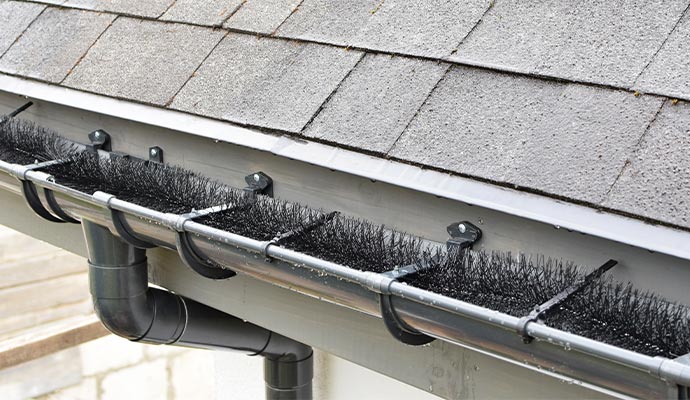
Bottle brush guards are one of the cheapest options. Brush guards feature bristles or brushes that line the inside of the gutter, allowing water to flow through while blocking leaves and debris.
While water can flow through, the brush can quickly clog with small debris. Unfortunately, there is no easy way to clean them out.
Additionally, many homeowners find bottle brush guards deteriorate quickly over time. So, while they may be inexpensive and easy to install, they may require more maintenance than other gutter guard designs.
2. Foam Gutter Guards
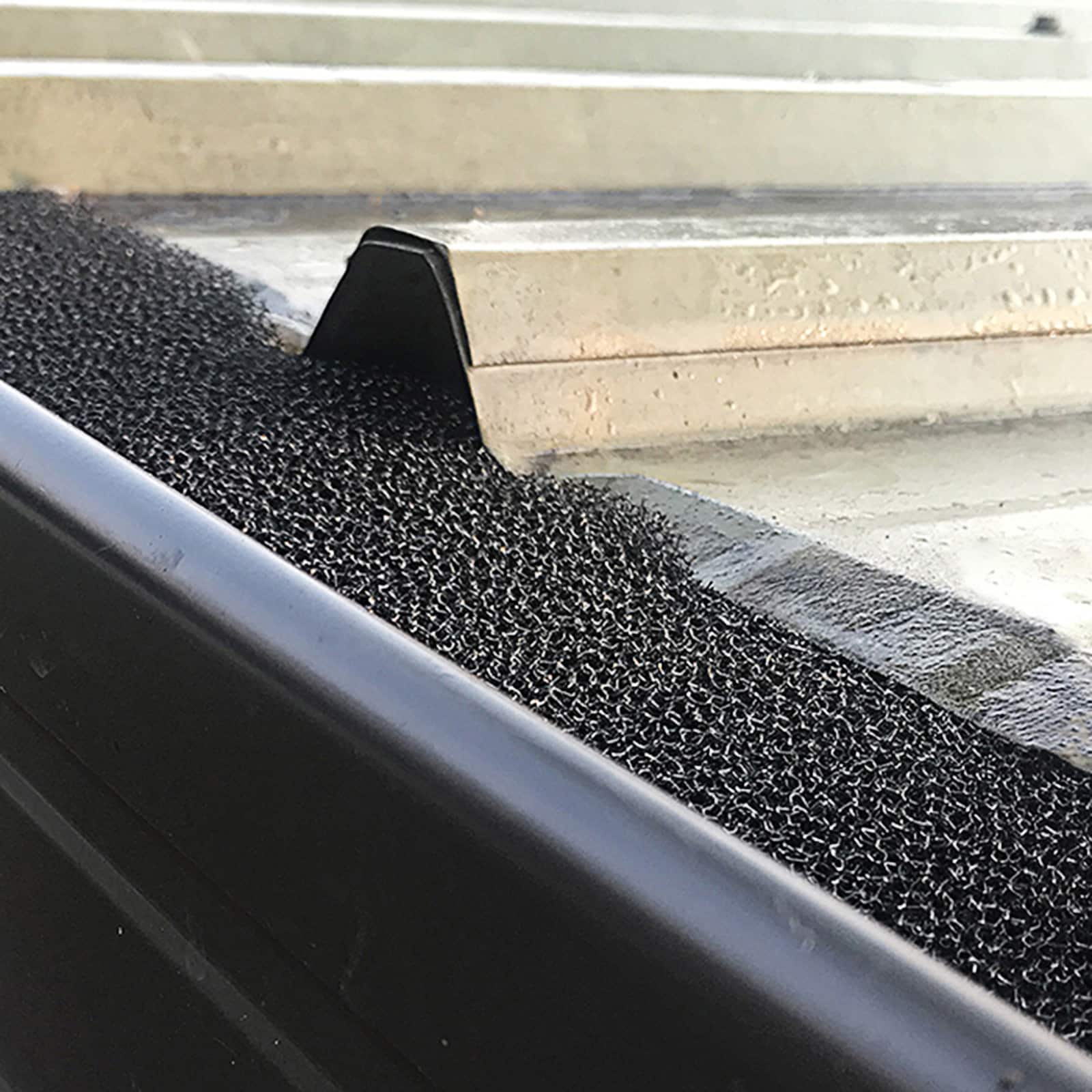
Foam gutter guards look like long, triangular pieces of foam that slide into your gutter system. They come in various sizes and are designed to allow the water to flow through the foam into the gutters, filtering out debris.
While inexpensive, they have similar performance issues to the bottle brush guards. The gutters can still get clogged with debris, are challenging to clean, and disintegrate over time.
3. Vinyl & Plastic Gutter Guards
Plastic or vinyl guards are long grates that snap into your gutters. They are popular for many reasons:
- You can install them yourself.
- They’re cheaper than metal guards.
- They perform better than foam and bottle brush guards.
However, as they are plastic, they can warp or bend from high heat and built-up debris. As a result, they have a shorter lifespan.
Additionally, since they can break easily, removing and reinstalling them during cleaning without damaging them is not easy. While they work more effectively than foam or bottle brush guards, they have downsides.
4. Perforated Gutter Guards
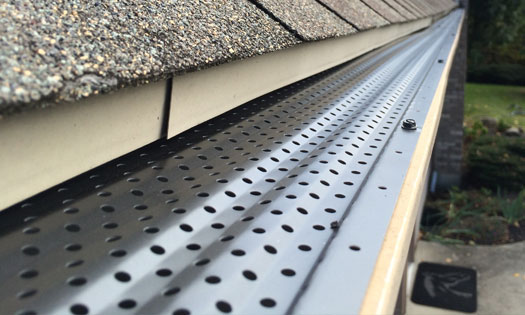
Perforated gutter guards are typically made from aluminum. They are long sheets of metal with perforated holes to allow water to flow through. They sit inside the gutter system and attach to the gutters themselves.
They are more complex and require professional installation. But they have other benefits like rust protection and keeping your gutters debris-free.
5. Reverse-Curve Gutter Guards
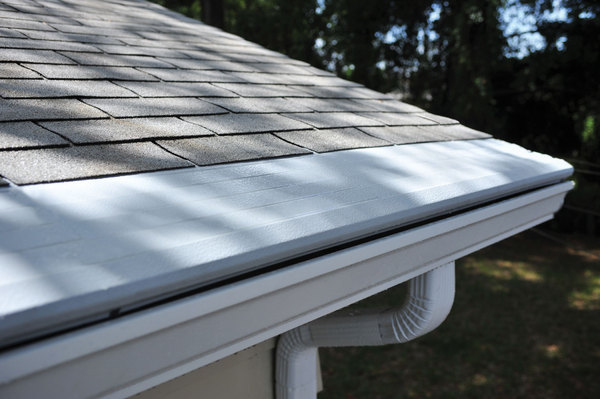
These guards have a reverse curve, or louvered design, that encourages water to cling to the guard’s surface and enter the gutter while debris falls off.
Unfortunately, one major downside can occur if your roof is steep. Steep roofs often have water runoff leading to a single point, creating too much momentum for the water to slide into the gutter. Instead, the water will shoot over your gutters onto the ground.
6. Micro-Mesh Gutter Guards
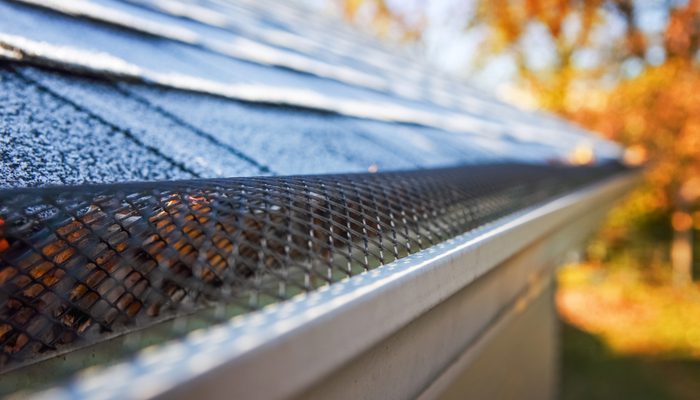
These guards consist of a fine mesh or screen that covers the gutter. The mesh allows water to pass through while blocking leaves and debris, even filtering out the smallest debris, like pine straw and shingle granules. This makes them excellent for homes with heavy tree coverage.
Mesh guards are often very effective and low maintenance, but they require debris to be blown off every so often to prevent build-up on top of the guards. No gutter guards are 100% maintenance-free.
Since these are a more premium product, they are one of the more expensive options and require professional installation.
If you want micro-mesh gutter guards, choose a brand that has a solid frame to ensure the mesh is sturdy and won’t bend.
Benefits of Gutter Guards
The benefits of gutter guards will vary depending on type, but here are a few benefits you may be able to expect.
- Reduced Maintenance: Gutter guards significantly reduce the need for gutter cleaning. With fewer leaves and debris entering the gutter, you’ll spend less time and effort on maintenance.
- Prevent Clogs: By keeping gutters clear of debris, gutter guards prevent clogs and blockages. This ensures that rainwater can flow freely through the gutter system.
- Protect Against Water Damage: Clogged gutters can overflow with water, damaging your home’s foundation, siding, and landscaping. Gutter guards help prevent water damage by keeping gutters functioning correctly.
- Extend Gutter Lifespan: Gutter guards can extend the lifespan of your gutters by reducing the risk of rust and corrosion caused by standing water.
- Fire Prevention: In regions prone to wildfires, gutter guards can prevent leaves and debris from accumulating in gutters, reducing the risk of ember ignition during a fire.
- Improved Pest Control: Clogged gutters attract pests like mosquitoes, birds, and rodents. Gutter guards help deter these pests by eliminating their water source.
Gutter Guard Pricing
Pricing and budgets are always at the forefront of homeowner’s minds. If you want to keep debris out of your gutters, here’s what you can expect for gutter guard pricing.
Depending on the type of gutter guard you choose, you could pay up to $50 per linear foot. Cheaper options include plastic and vinyl gutter guards you can install yourself. Typically, these styles are available at Home Depot for $4 per 3-foot-section.
However, when considering micromesh or aluminum gutter guards, the premium materials will increase the price.
Overall, homeowners can expect gutter guards to cost $10-$15 per linear foot until they receive a custom estimate.
Getting a Gutter Guard Estimate
Gutter guards are a valuable investment that can save you time, money, and potential headaches by preventing clogged gutters and protecting your home from water damage.
Whether you choose mesh, surface-tension, reverse-curve, or brush gutter guards, the result is the same: cleaner, more efficient gutters that keep your home safe and dry. Consider installing gutter guards to enjoy the benefits of a low-maintenance gutter system that works year-round to protect your home.
Want to learn more about gutter maintenance? Read “5 Reasons It’s Essential to Clean Your Gutters” and “How Much Do New Gutters Cost?”
Do you need gutter guards in southeastern Wisconsin? Rescue My Roof is a certified Raindrop Gutter Guard Installer. Contact us today to get a free estimate.


